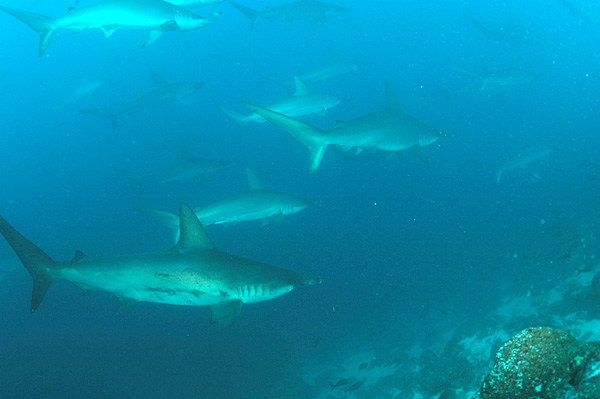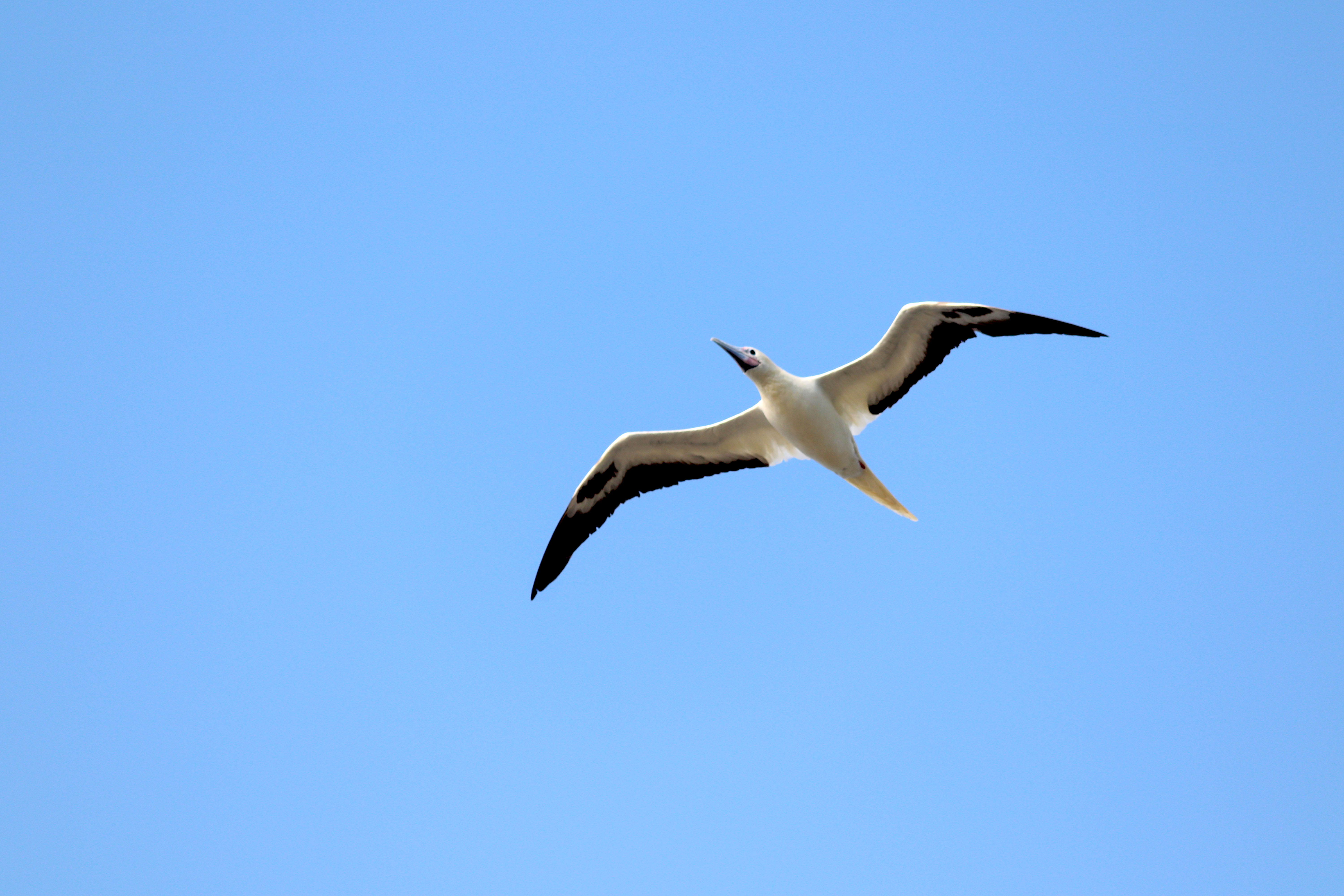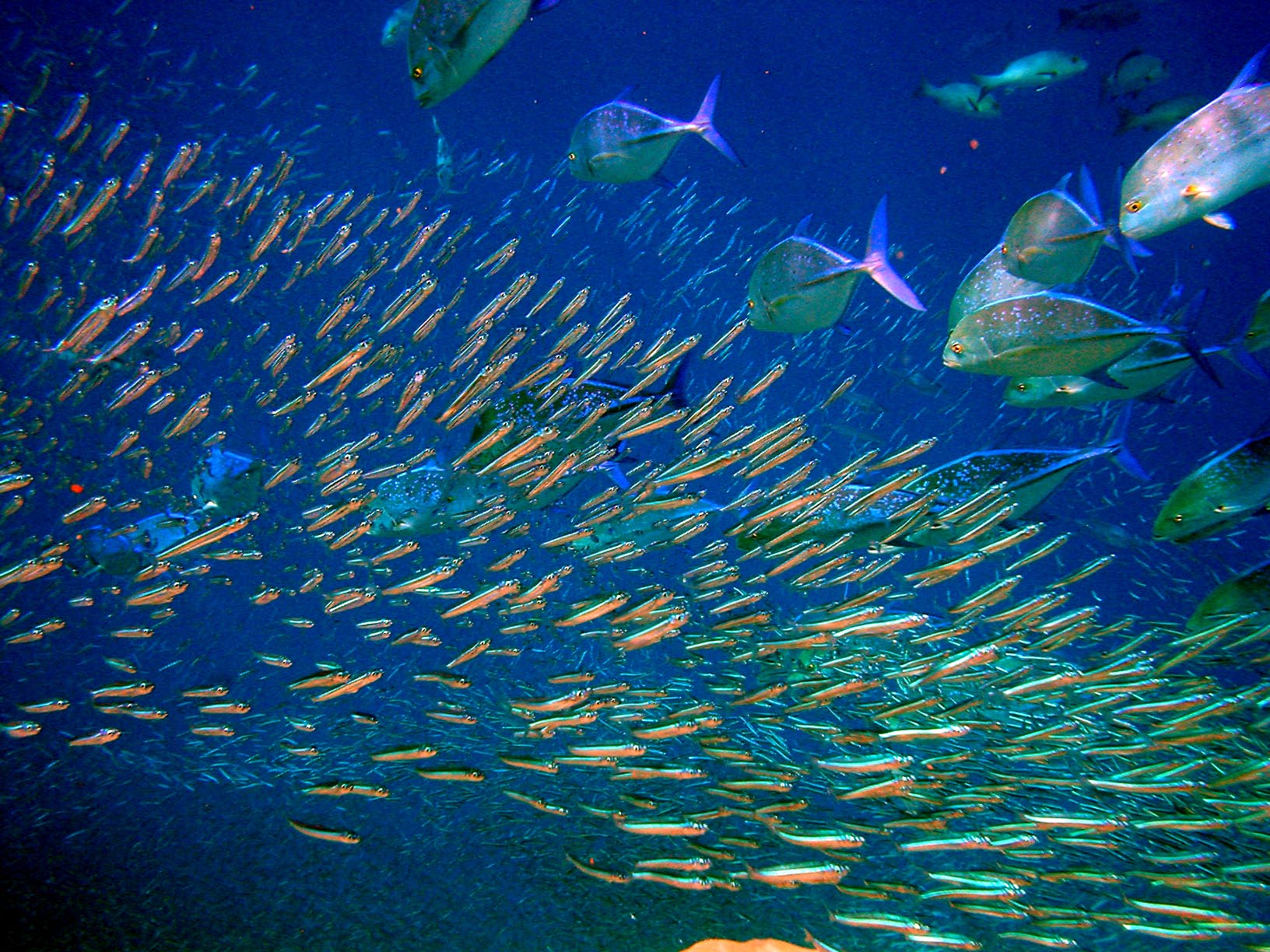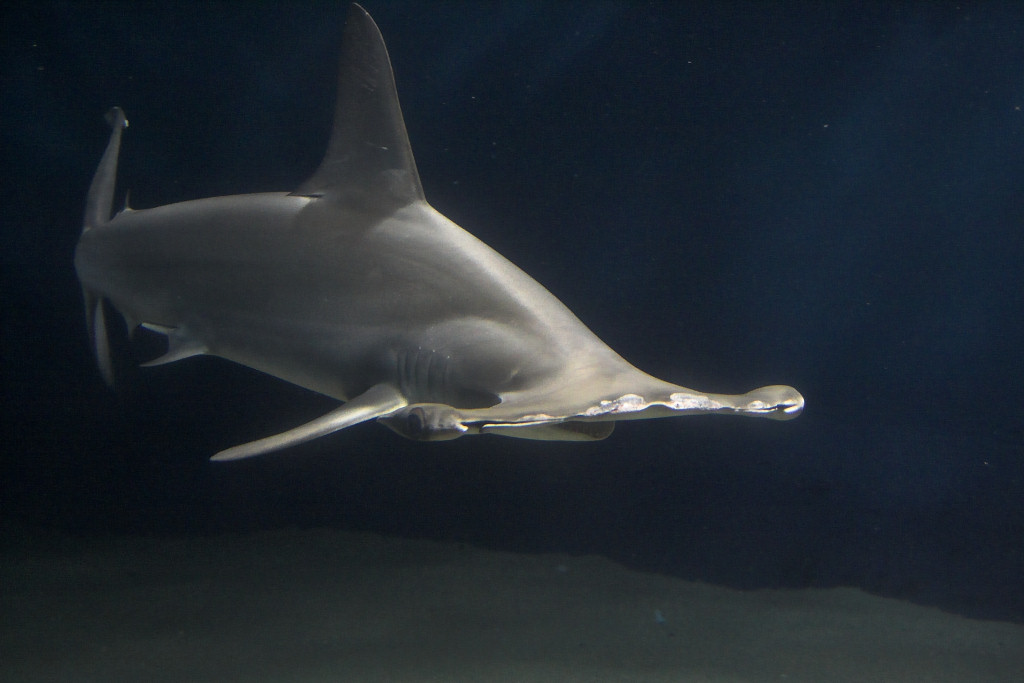|
Wenman Island
Wolf Island ( Spanish: ''Isla Wolf'') or Wenman Island is a small island in the Galápagos Islands and was named after the German geologist Theodor Wolf, who also has the volcano Wolf on Isabela Island named after him. It has an area of and a maximum altitude of above sea level. The island is remote from the main island group and has no permanent population. The Galápagos National Park does not allow landing on the island; however, it is a popular diving location. The group formed by Darwin Island and Wolf was previously known as Culpepper and Wenman. Geology Wolf Island is the remains of an extinct volcano that reaches a maximum above sea level, it is situated north west of the main Galápagos Island group on the Wolf-Darwin Lineament that extends from the Galápagos Platform to the Galápagos Spreading Center, a mid ocean ridge separating the Nazca and Cocos tectonic plates. Like its near neighbour Darwin Island, Wolf Island is upstream of the magma plume, in t ... [...More Info...] [...Related Items...] OR: [Wikipedia] [Google] [Baidu] |
Galápagos Islands
The Galápagos Islands (Spanish: , , ) are an archipelago of volcanic islands. They are distributed on each side of the equator in the Pacific Ocean, surrounding the centre of the Western Hemisphere, and are part of the Republic of Ecuador. Located west of continental Ecuador, the islands are known for their large number of endemic species that were studied by Charles Darwin during the second voyage of HMS ''Beagle''. His observations and collections contributed to the inception of Darwin's theory of evolution by means of natural selection. The Galápagos Islands and their surrounding waters form the Galápagos Province of Ecuador, the Galápagos National Park, and the Galápagos Marine Reserve. The principal language on the islands is Spanish. The islands have a population of slightly over 25,000. The first recorded visit to the islands happened by chance in 1535, when Fray Tomás de Berlanga, the Bishop of Panamá, was surprised to find this undiscovered land on a vo ... [...More Info...] [...Related Items...] OR: [Wikipedia] [Google] [Baidu] |
Smithsonian Astrophysical Observatory
The Smithsonian Astrophysical Observatory (SAO) is a research institute of the Smithsonian Institution, concentrating on astrophysical studies including galactic and extragalactic astronomy, cosmology, solar, earth and planetary sciences, theory and instrumentation, using observations at wavelengths from the highest energy gamma rays to the radio, along with gravitational waves. Established in Washington, D.C., in 1890, the SAO moved its headquarters in 1955 to Cambridge, Massachusetts, where its research is a collaboration with the Harvard College Observatory (HCO) and the Harvard University Department of Astronomy. In 1973, the Smithsonian and Harvard formalized the collaboration as the Center for Astrophysics , Harvard & Smithsonian (CfA) under a single Director. History Samuel Pierpont Langley, the third Secretary of the Smithsonian, founded the Smithsonian Astrophysical Observatory on the south yard of the Smithsonian Castle (on the U.S. National Mall) on March 1 ... [...More Info...] [...Related Items...] OR: [Wikipedia] [Google] [Baidu] |
Vampire Ground Finch
The vampire ground finch (''Geospiza septentrionalis'') is a small bird native to the Galápagos Islands. It was considered a very distinct subspecies of the sharp-beaked ground finch (''Geospiza difficilis'') endemic to Wolf and Darwin Islands.Grant, Peter R.; Grant, B. Rosemary & Petren, Kenneth (2000). The allopatric phase of speciation: the sharp-beaked ground finch (''Geospiza difficilis'') on the Galápagos islands. '' Biol. J. Linn. Soc.'' 69(3): 287–317. The International Ornithologists' Union has split the species supported by strong genetic evidence that they are not closely related, and divergences in morphology and song. Other taxonomic authorities still consider it conspecific. Description The vampire finch is sexually dimorphic as typical for its genus, with the males being primarily black and the females grey with brown streaks. It has a lilting song on Wolf, a buzzing song on Darwin, and whistling calls on both islands; only on Wolf, a drawn-out, buzz ... [...More Info...] [...Related Items...] OR: [Wikipedia] [Google] [Baidu] |
Red-footed Booby
The red-footed booby (''Sula sula'') is a large seabird of the booby family, Sulidae. Adults always have red feet, but the colour of the plumage varies. They are powerful and agile fliers, but they are clumsy in takeoffs and landings. They are found widely in the tropics, and breed colonially in coastal regions, especially islands. The species faces few natural or man-made threats, although its population is declining; it is considered to be a least-concern species by the International Union for Conservation of Nature (IUCN). Taxonomy The first formal description of the red-footed booby was by the Swedish naturalist Carl Linnaeus in 1766 in the twelfth edition of his ''Systema Naturae''. He introduced the binomial name ''Pelecanus sula''. The type locality is Barbados in the West Indies. The present genus ''Sula'' was introduced by the French scientist Mathurin Jacques Brisson in 1760. The word ''Sula'' is Norwegian for a gannet. There are three subspecies: * ''S. s. sula'' ... [...More Info...] [...Related Items...] OR: [Wikipedia] [Google] [Baidu] |
Frigatebird
Frigatebirds are a family of seabirds called Fregatidae which are found across all tropical and subtropical oceans. The five extant species are classified in a single genus, ''Fregata''. All have predominantly black plumage, long, deeply forked tails and long hooked bills. Females have white underbellies and males have a distinctive red gular pouch, which they inflate during the breeding season to attract females. Their wings are long and pointed and can span up to , the largest wing area to body weight ratio of any bird. Able to soar for weeks on wind currents, frigatebirds spend most of the day in flight hunting for food, and roost on trees or cliffs at night. Their main prey are fish and squid, caught when chased to the water surface by large predators such as tuna. Frigatebirds are referred to as kleptoparasites as they occasionally rob other seabirds for food, and are known to snatch seabird chicks from the nest. Seasonally monogamous, frigatebirds nest colonially. A roug ... [...More Info...] [...Related Items...] OR: [Wikipedia] [Google] [Baidu] |
Pelagic Fish
Pelagic fish live in the pelagic zone of ocean or lake waters—being neither close to the bottom nor near the shore—in contrast with demersal fish that do live on or near the bottom, and reef fish that are associated with coral reefs. The marine pelagic environment is the largest aquatic habitat on Earth, occupying 1,370 million cubic kilometres (330 million cubic miles), and is the habitat for 11% of known fish species. The oceans have a mean depth of . About 98% of the total water volume is below , and 75% is below . Moyle and Cech, p. 585 Marine pelagic fish can be divided into coastal (inshore) fish and oceanic (offshore) fish. Coastal pelagic fish inhabit the relatively shallow and sunlit waters above the continental shelf, while oceanic pelagic fish inhabit the vast and deep waters beyond the continental shelf (even though they also may swim inshore). Pelagic fish range in size from small coastal forage fish, such as herrings and sardines, to large apex pre ... [...More Info...] [...Related Items...] OR: [Wikipedia] [Google] [Baidu] |
Manta Ray
Manta rays are large rays belonging to the genus ''Mobula'' (formerly its own genus ''Manta''). The larger species, '' M. birostris'', reaches in width, while the smaller, '' M. alfredi'', reaches . Both have triangular Pectoral fin#AnchPectoral, pectoral fins, horn-shaped cephalic fins and large, forward-facing mouths. They are classified among the Myliobatiformes (stingrays and relatives) and are placed in the Family (biology), family Myliobatidae (eagle rays). They have the largest brains and brain to body ratio of all fish, and can pass the mirror test. Mantas are found in warm temperate, subtropical and tropical waters. Both species are Pelagic fish, pelagic; ''M. birostris'' Animal migration, migrates across open oceans, singly or in groups, while ''M. alfredi'' tends to be resident and coastal. They are filter feeders and eat large quantities of zooplankton, which they gather with their open mouths as they swim. However, research suggests that the majority of their die ... [...More Info...] [...Related Items...] OR: [Wikipedia] [Google] [Baidu] |
Green Turtle
The green sea turtle (''Chelonia mydas''), also known as the green turtle, black (sea) turtle or Pacific green turtle, is a species of large sea turtle of the Family (biology), family Cheloniidae. It is the only species In biology, a species is the basic unit of classification and a taxonomic rank of an organism, as well as a unit of biodiversity. A species is often defined as the largest group of organisms in which any two individuals of the appropriate s ... in the genus ''Chelonia''. Its range extends throughout tropical and subtropical seas around the world, with two distinct populations in the Atlantic Ocean, Atlantic and Pacific Oceans, but it is also found in the Indian Ocean. The common name refers to the usually green fat found beneath its carapace, not to the color of its carapace, which is olive to black. The Dorsoventral#Dorsal and ventral, dorsoventrally flattened body of ''C. mydas'' is covered by a large, teardrop-shaped carapace; it has a pair of large, ... [...More Info...] [...Related Items...] OR: [Wikipedia] [Google] [Baidu] |
Whale Sharks
The whale shark (''Rhincodon typus'') is a slow-moving, filter-feeding carpet shark and the largest known extant fish species. The largest confirmed individual had a length of .McClain CR, Balk MA, Benfield MC, Branch TA, Chen C, Cosgrove J, Dove ADM, Gaskins LC, Helm RR, Hochberg FG, Lee FB, Marshall A, McMurray SE, Schanche C, Stone SN, Thaler AD. 2015. "Sizing ocean giants: patterns of intraspecific size variation in marine megafauna". ''PeerJ'' 3:e715 . The whale shark holds many records for size in the animal kingdom, most notably being by far the largest living nonmammalian vertebrate. It is the sole member of the genus ''Rhincodon'' and the only extant member of the family Rhincodontidae, which belongs to the subclass Elasmobranchii in the class Chondrichthyes. Before 1984 it was classified as ''Rhiniodon'' into Rhinodontidae. The whale shark is found in open waters of the tropical oceans and is rarely found in water below . Studies looking at vertebral growth bands and ... [...More Info...] [...Related Items...] OR: [Wikipedia] [Google] [Baidu] |
Galapagos Shark
The Galapagos shark (''Carcharhinus galapagensis'') is a species of requiem shark, in the family Carcharhinidae, found worldwide. It favors clear reef environments around oceanic islands, where it is often the most abundant shark species. A large species that often reaches , the Galapagos reef shark has a typical fusiform "reef shark" shape and is very difficult to distinguish from the dusky shark (''C. obscurus'') and the grey reef shark (''C. amblyrhynchos''). An identifying character of this species is its tall first dorsal fin, which has a slightly rounded tip and originates over the rear tips of the pectoral fins. The Galapagos shark is an active predator often encountered in large groups. It feeds mainly on bottom-dwelling bony fishes and cephalopods; larger individuals have a much more varied diet, consuming other sharks, marine iguanas, sea lions, and even garbage. As in other requiem sharks, reproduction is viviparous, with females bearing litters of 4–16 pups ... [...More Info...] [...Related Items...] OR: [Wikipedia] [Google] [Baidu] |
Hammerhead Shark
The hammerhead sharks are a group of sharks that form the family Sphyrnidae, so named for the unusual and distinctive structure of their heads, which are flattened and laterally extended into a "hammer" shape called a cephalofoil. Most hammerhead species are placed in the genus ''Sphyrna'', while the winghead shark is placed in its own genus, ''Eusphyra''. Many different, but not necessarily mutually exclusive, functions have been postulated for the cephalofoil, including sensory reception, manoeuvering, and prey manipulation. The cephalofoil gives the shark superior binocular vision and depth perception. Hammerheads are found worldwide in warmer waters along coastlines and continental shelves. Unlike most sharks, some hammerhead species usually swim in Shoaling and schooling, schools during the day, becoming solitary hunters at night. Description The known species range from in length and weigh from . One specimen caught off the Florida coast in 1906 weighed over . They are u ... [...More Info...] [...Related Items...] OR: [Wikipedia] [Google] [Baidu] |
Basalts
Basalt (; ) is an aphanitic (fine-grained) extrusive igneous rock formed from the rapid cooling of low-viscosity lava rich in magnesium and iron (mafic lava) exposed at or very near the surface of a rocky planet or moon. More than 90% of all volcanic rock on Earth is basalt. Rapid-cooling, fine-grained basalt is chemically equivalent to slow-cooling, coarse-grained gabbro. The eruption of basalt lava is observed by geologists at about 20 volcanoes per year. Basalt is also an important rock type on other planetary bodies in the Solar System. For example, the bulk of the plains of Venus, which cover ~80% of the surface, are basaltic; the lunar maria are plains of flood-basaltic lava flows; and basalt is a common rock on the surface of Mars. Molten basalt lava has a low viscosity due to its relatively low silica content (between 45% and 52%), resulting in rapidly moving lava flows that can spread over great areas before cooling and solidifying. Flood basalts are thick sequenc ... [...More Info...] [...Related Items...] OR: [Wikipedia] [Google] [Baidu] |









